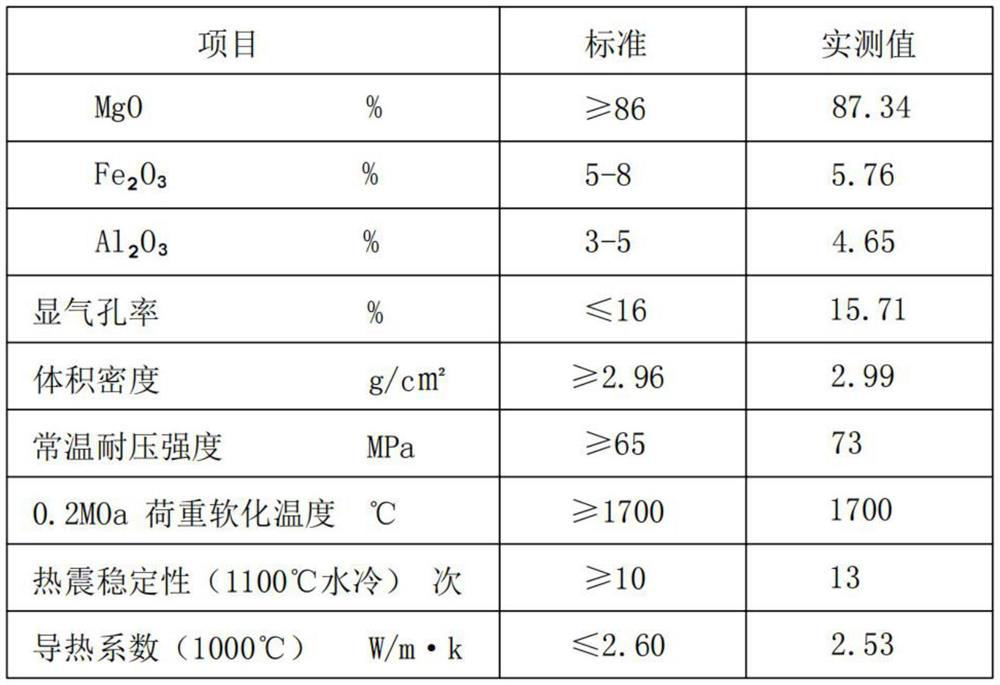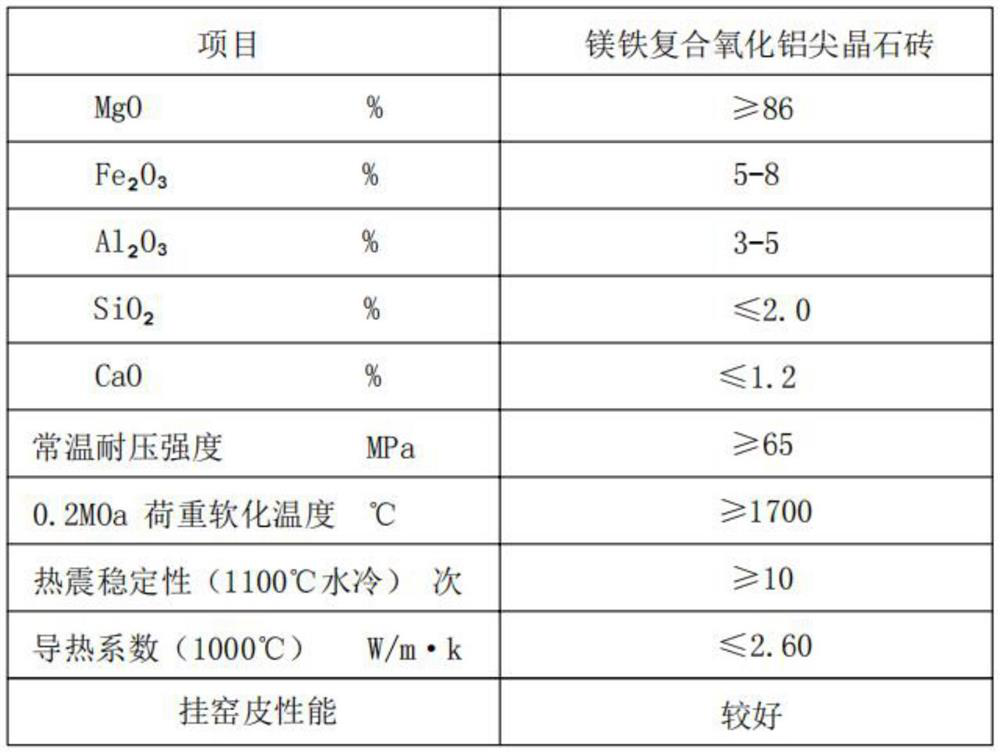Preparation method of magnesium-iron composite alumina spinel brick for rotary kiln for co-processing hazardous waste
A technology of composite alumina and spinel bricks, which is applied in the field of preparation of magnesia-iron composite alumina spinel bricks for the co-processing of hazardous waste rotary kilns. and other problems to achieve good thermal shock resistance, good kiln skin hanging performance, and good corrosion resistance
- Summary
- Abstract
- Description
- Claims
- Application Information
AI Technical Summary
Problems solved by technology
Method used
Image
Examples
Embodiment Construction
[0027] The preparation method of the magnesia-iron composite alumina spinel brick for co-processing hazardous waste rotary kiln comprises the following steps:
[0028] S1: Production process of magnesia-iron composite alumina spinel bricks;
[0029] a. Raw material standards:
[0030] To select raw materials for chemical composition analysis, the requirements are shown in the table below:
[0031] (1).Fused magnesia containing MgO≥97%, containing SiO 2 ≤0.8%, containing Fe 2 o 3 ≤0.8%, containing GaO≤1.0%;
[0032] (2). Sintered iron sand contains MgO≥97%, containing SiO 2 ≤1.0%, containing Fe 2 o 3 ≤1.0%, containing GaO≤1.5%;
[0033] (3).Fe-aluminum spinel containing MgO≤1.0%, containing SiO 2 ≤0.8%, containing Fe 2 o 3 ≥35%, containing Al 2 o 3 ≥58%, containing GaO≤1.0%;
[0034] project MgO SiO 2
Fe 2 o 3
Al 2 o 3
CaO Fused magnesia ≥97% ≤0.8% ≤0.8% - ≤1.0% Sintered iron sand ≥97% ≤1.0% ≤1.0% - ≤1.5% ...
PUM
| Property | Measurement | Unit |
|---|---|---|
| density | aaaaa | aaaaa |
Abstract
Description
Claims
Application Information
 Login to View More
Login to View More - R&D
- Intellectual Property
- Life Sciences
- Materials
- Tech Scout
- Unparalleled Data Quality
- Higher Quality Content
- 60% Fewer Hallucinations
Browse by: Latest US Patents, China's latest patents, Technical Efficacy Thesaurus, Application Domain, Technology Topic, Popular Technical Reports.
© 2025 PatSnap. All rights reserved.Legal|Privacy policy|Modern Slavery Act Transparency Statement|Sitemap|About US| Contact US: help@patsnap.com


